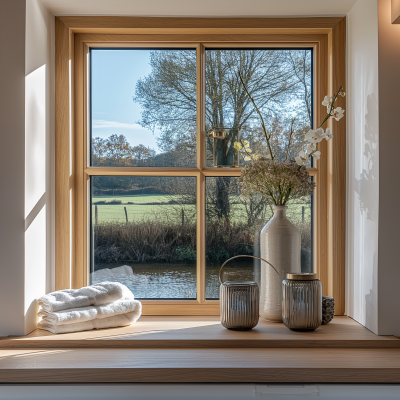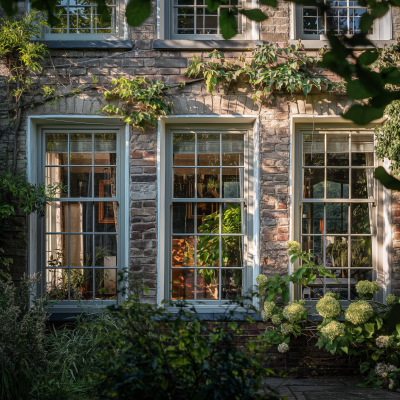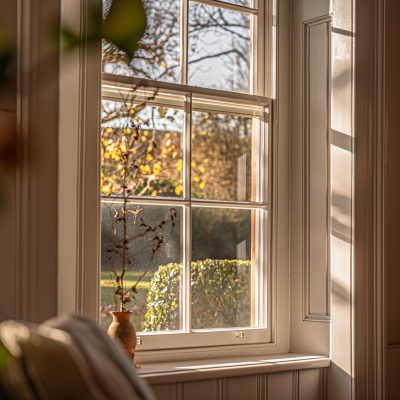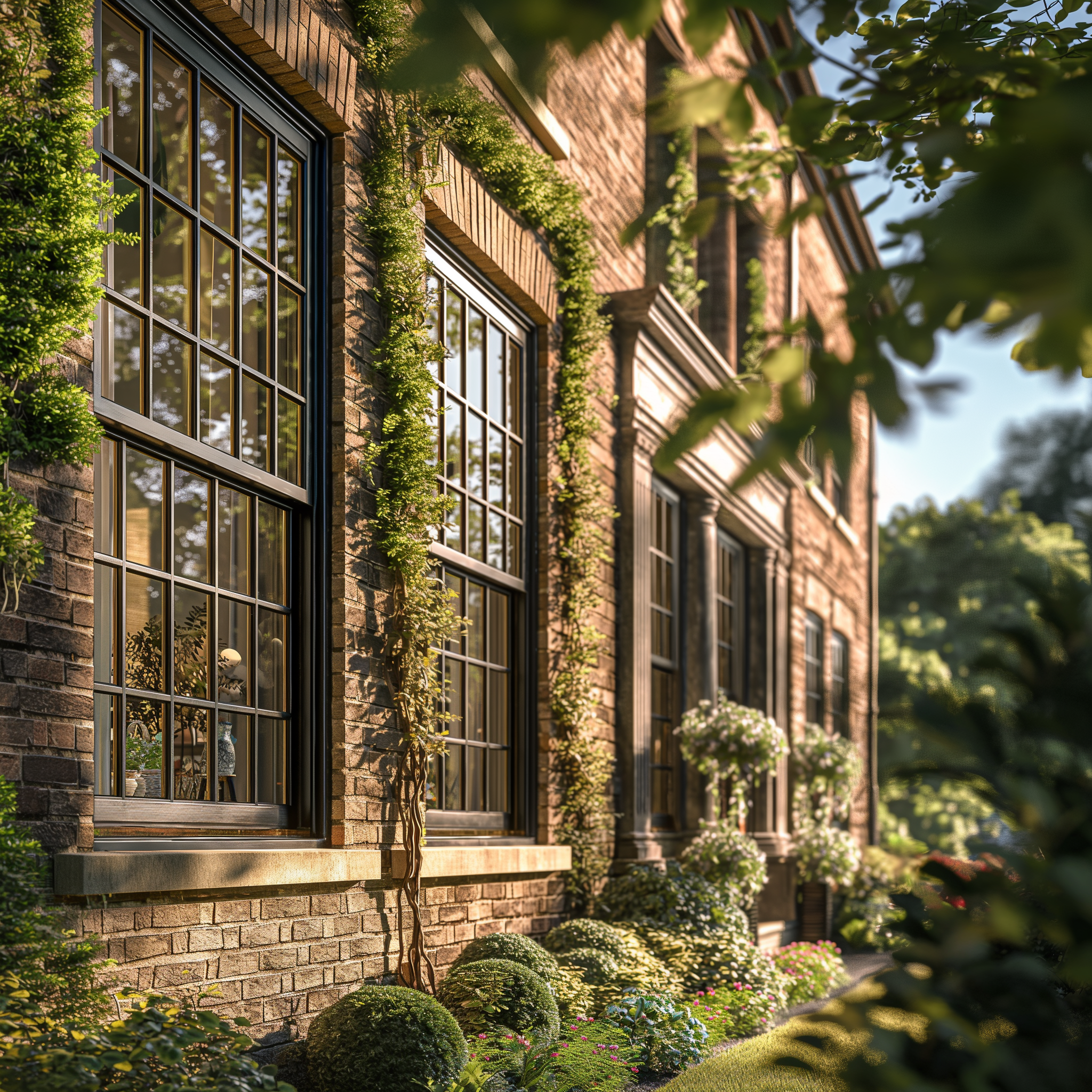In today's bustling urban landscapes, noise pollution emerges as a pervasive challenge, disturbing the tranquillity of our homes and impacting our wel
In today’s bustling urban landscapes, noise pollution emerges as a pervasive challenge, disturbing the tranquillity of our homes and impacting our well-being. Traditional sash windows, with their aesthetic appeal and historical value, unfortunately, offer insufficient protection against this relentless urban clamour.
This article explores a variety of advanced solutions designed to enhance the noise insulation of sash windows without compromising their classic design. From innovative glazing options to sophisticated sealing systems, these technologies promise to shield interiors from unwanted noise improve energy efficiency and maintain architectural integrity. Here, we explore how modern advancements can meet the dual demands of functionality and historical preservation in urban dwellings.
The Vulnerability of Sash Windows to Noise

The traditional sash window is one of the weakest points regarding sound insulation in urban residential structures. These windows, often found in historical buildings, are usually made with timber frames and equipped with single glazing.
While aesthetically pleasing, they are not designed to block out the modern cacophony of city life. The inherent gaps and the lack of adequate sealing in these windows allow noise to penetrate homes easily, turning what should be a sanctuary into a noisy extension of the street.
Balancing Historic Charm with Modern Needs
Many property owners are keen to preserve sash windows because of their historical significance and visual appeal. However, the need for contemporary functionalities, such as effective noise reduction, presents a challenge. Integrating modern noise-mitigation technologies without compromising the window’s traditional operation or appearance requires innovative solutions that respect both the architectural integrity and the practical needs of urban living.
Innovative Acoustic Improvement Solutions for Sash Windows

Double Glazing
Double glazing is one of the most effective solutions for enhancing the acoustic insulation of sash windows. This technology involves using two panes of glass, separated by an inert gas layer, usually argon or krypton. This setup not only reduces the noise transmission but also improves thermal insulation. Slimline double-glazed units are specifically designed to fit into traditional sash windows, ensuring that the visual impact and operation of the windows are preserved.
Secondary Glazing
Secondary glazing offers a substantial improvement in thermal and acoustic performance for those looking for minimal alterations to their existing windows. This method involves installing an additional slimline window pane inside the existing window. The air gap between the original and secondary pane provides an excellent buffer against noise, making it an ideal choice for listed buildings or in areas where changes to external appearances are restricted.
Acoustic Glass
Acoustic glass is specially designed to combat noise pollution. It typically consists of multiple glass layers bonded with one or more acoustic interlayers. These interlayers act to disrupt the sound waves as they travel through the glass, significantly reducing the noise that makes its way into a room. Using acoustic glass in sash windows can be a game-changer for residents in high-noise areas, such as those near airports or busy streets.
Enhancing Sound Insulation with Sealing Systems
Apart from upgrading the glass, improving the sealing of the window frames is another crucial step in noise reduction. Technologies like the Ventrolla Perimeter Sealing System or various forms of compression seals effectively close off the gaps that traditionally plague sash windows. By eliminating these air gaps, we not only reduce sound penetration but also enhance the window’s overall energy efficiency, preventing drafts and heat loss.
Retrofitting Innovations
Retrofitting existing sash windows with these advanced technologies is a delicate process. It requires carefully preserving the window’s original aesthetics and upgrading its functionality. The process often involves reweighting the windows to accommodate the added weight of double or acoustic glass, ensuring that the traditional mechanisms, such as the pulley and sash cords, continue to operate smoothly.
Environmental and Energy Benefits of Improved Window Insulation
Enhancing the acoustic and thermal insulation of sash windows provides immediate comfort and contributes to broader environmental benefits. By improving the energy efficiency of buildings, we reduce the demand for heating and cooling, lowering energy consumption and greenhouse gas emissions. Improved window insulation retains heat during the winter and keeps interiors cool in the summer, significantly reducing energy costs and a smaller carbon footprint.
Soft furnishings like heavy curtains, blinds, or upholstered items can complement these hard surface solutions. They absorb sound, further dampening noise pollution from entering living spaces while also adding an aesthetic touch that enhances the interior decor. This dual benefit of functional and decorative elements aligns well with modern interior design trends that prioritise both style and sustainability.
Professional Services: Ensuring Quality and Compliance

The installation of noise reduction technologies in sash windows is a sophisticated process that requires expertise to ensure optimal performance and adherence to aesthetic and heritage standards. Professional services play a critical role in this, offering consultation, customisation, and installation that respect the property’s historical value while integrating modern advancements.
“As experts in window technology, we understand how to balance the structural and operational aspects of traditional sash windows with new materials and designs. We tailor solutions to each specific context—be it a residential home, commercial building, or heritage site. Our professional installation ensures that these solutions are implemented effectively, maintaining the windows’ functionality and durability over time.” – Arthur East, Sash Windows London.
Economic and Maintenance Considerations
Investing in noise reduction solutions for sash windows involves consideration of various economic factors. The cost of such improvements can vary significantly depending on the materials used, the design’s complexity, and the installation’s intricacies. High-quality double glazing or specialised acoustic glass, for example, requires a more substantial initial investment than simpler solutions like secondary glazing or basic sealing systems.
However, weighing these initial costs against the long-term benefits, including reduced energy bills, increased property value, and improved quality of life, is essential. Regular maintenance is also crucial to sustain the performance of the windows. This includes checking the integrity of seals, ensuring the smooth operation of moving parts, and periodically replacing parts subject to wear and tear.
The maintenance of sash windows upgraded with noise reduction technologies does not significantly differ from that of regular windows but requires a more informed approach to preserve their enhanced features. For instance, cleaning double-glazed windows or repairing specialised sealing systems might require specific products or techniques that professionals can provide.
Conclusive Thoughts
In urban environments, where noise pollution is a constant presence, the role of effectively insulated sash windows must be balanced. By combining historical aesthetics with modern technological solutions, we can significantly enhance our cities’ living and working environments. The strategies outlined—from double glazing and secondary glazing to specialised acoustic glass and sealing systems—offer robust solutions to the challenges posed by urban noise.
Ultimately, successfully implementing these technologies depends on carefully considering their environmental impact, economic viability, and the expertise of professionals tasked with their installation. As we seek ways to balance the old with the new, the innovation in sash window technology stands out as a prime example of how we can preserve our architectural heritage while adapting to the demands of modern urban living.



















































































































COMMENTS